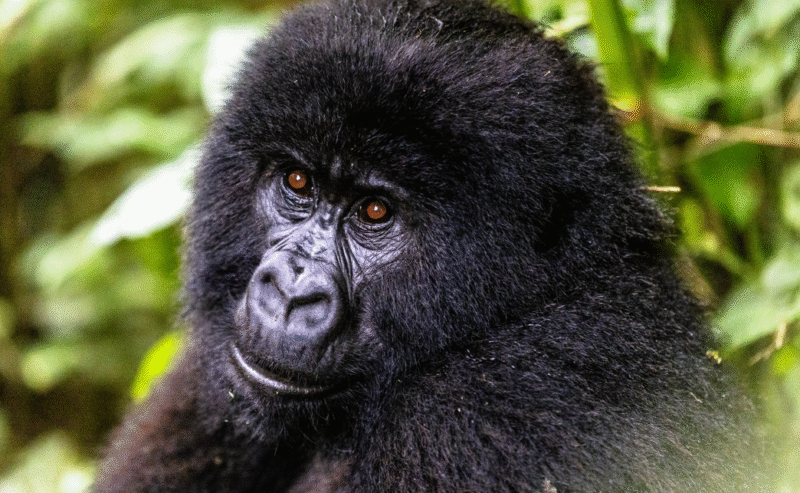
Support Virunga this Giving Season >
Conservation of Intelligence
The Cognitive Abilities Connecting Primates
World Primate Day spotlights one of planet Earth’s most remarkable taxa of animals. In observance of this important day, we are celebrating the intelligence, complex interrelationships, and capacity for communication that connect all primates. These seed-dispersing mammals are key to their ecosystems – and the standards by which we measure ourselves.
Virunga National Park, home to the greatest diversity of primates found in any African protected area, provides a crucial sanctuary to an array of primates. From socially sophisticated gorillas to chattering populations of chimpanzees and monkeys, each threatened species embodies the wonder and vulnerability of intelligent life on Earth, underscoring our role in curbing human pressures through the use of our own cognitive abilities.
Read on to discover the cerebral specializations of the Park’s primates.
Mountain Gorilla
Mountain gorillas demonstrate advanced problem-solving and social intelligence, often using coordinated group strategies to protect their families from danger.
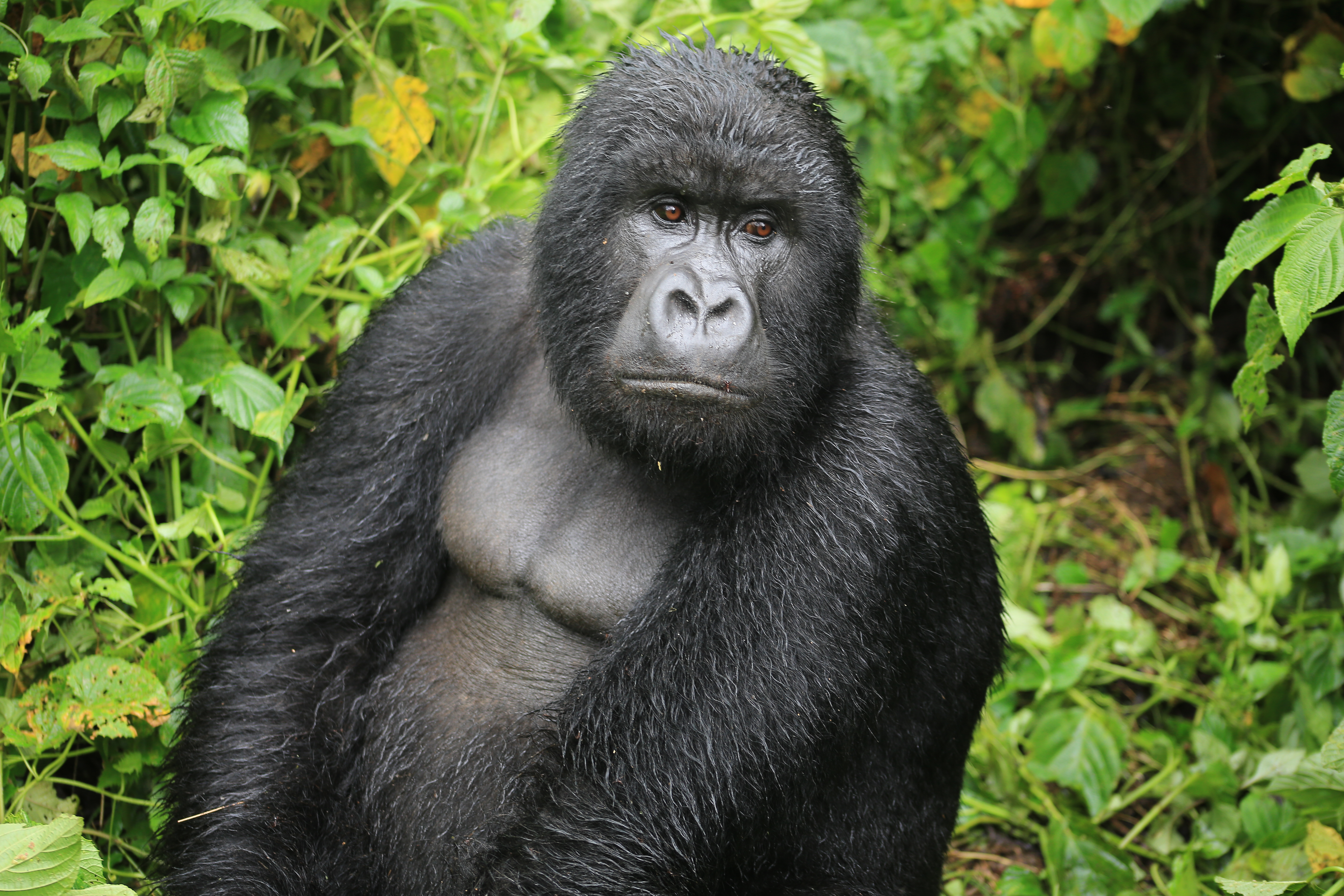
(Picture taken by Virunga National Park)
Eastern Lowland Gorilla
As well as being known for their use of simple tools, Eastern lowland boast a strong memory that helps them navigate their dense forest habitats.
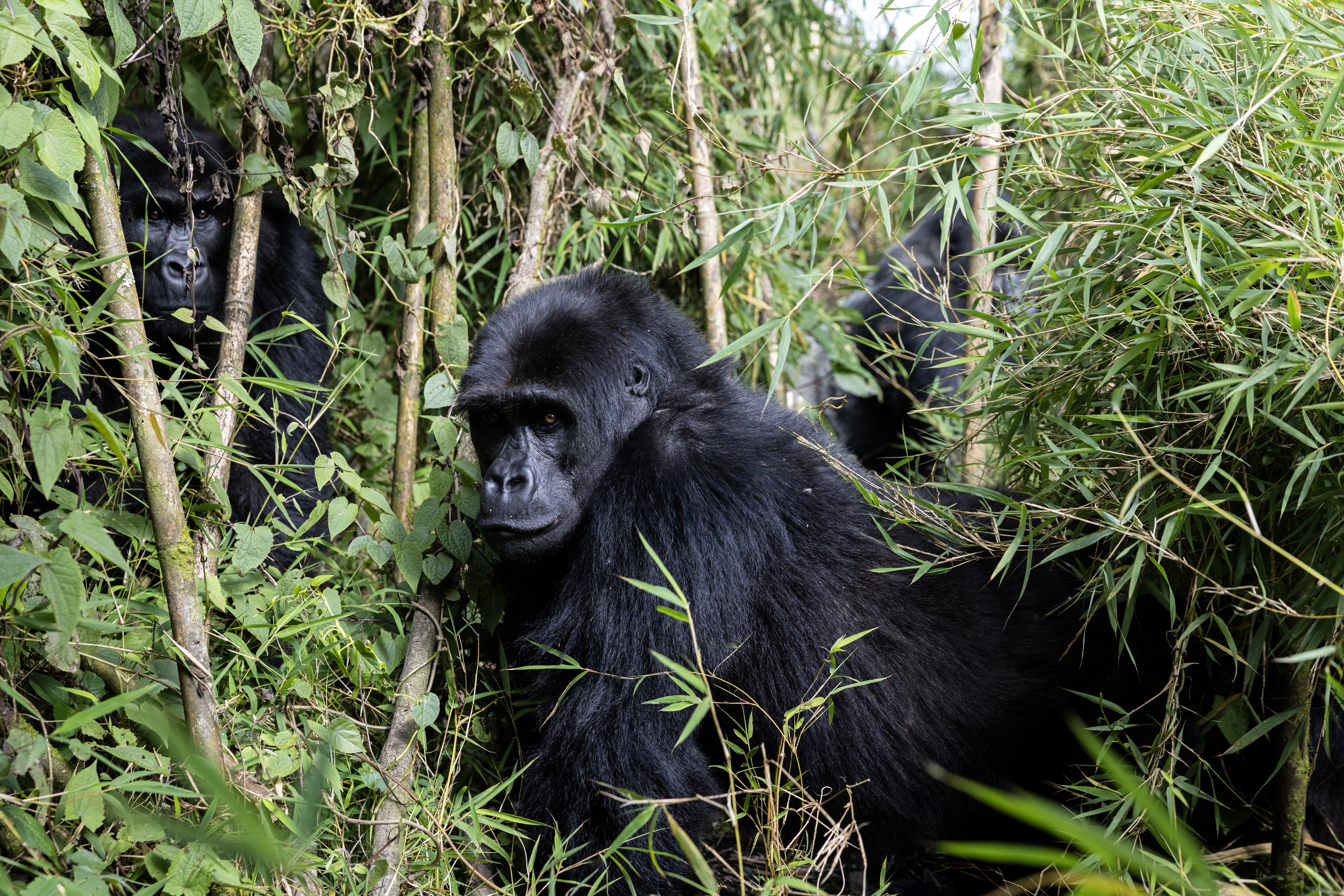
(Picture taken by Brent Stirton)
Eastern Chimpanzee
Eastern chimpanzees are among the most intelligent of all animal species. Their highly evolved brains allow for complex cognitive functions, including tool-making, multi-stage planning, learning through imitation, and the ability to transmit culture generationally.
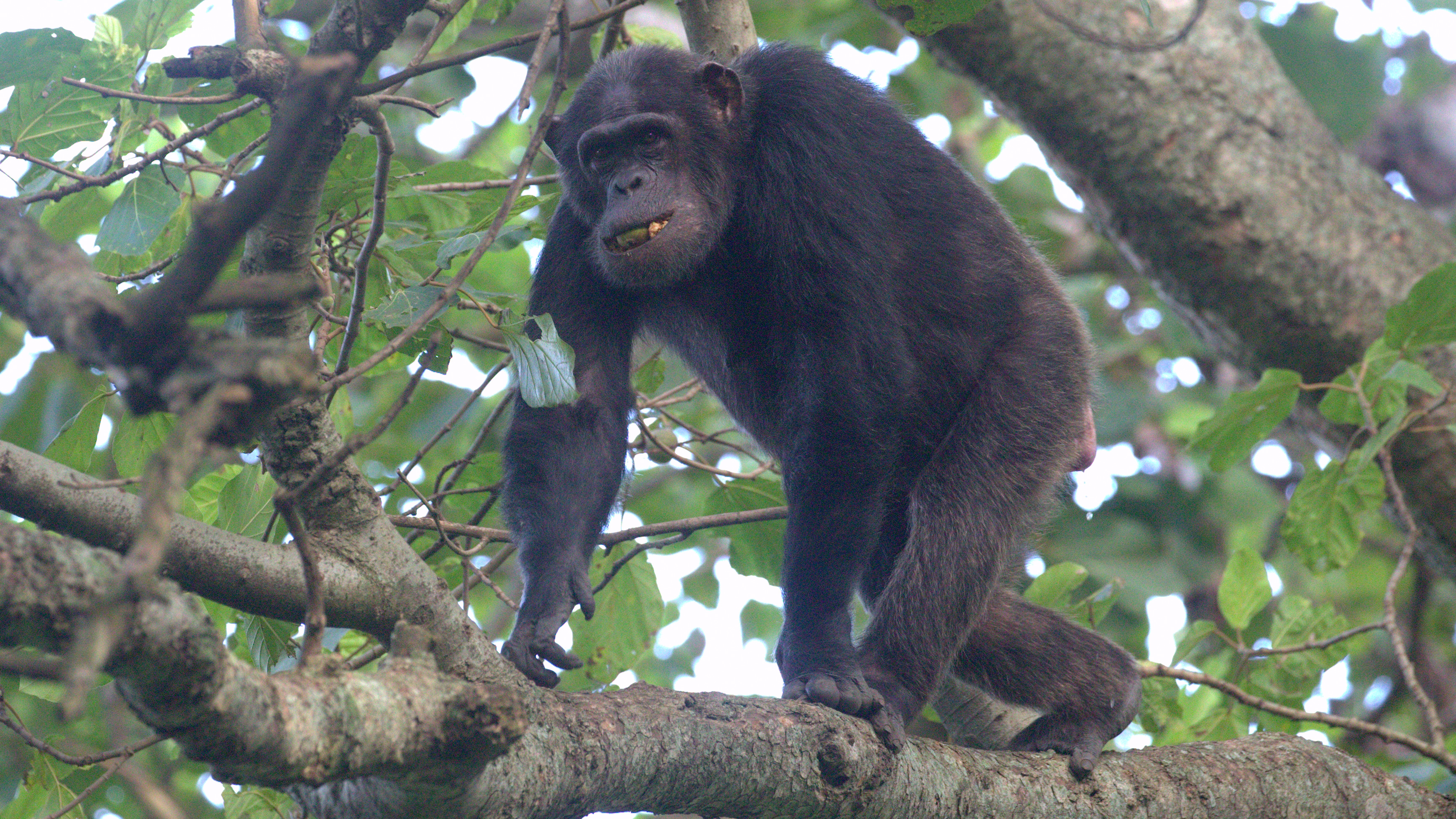
(Picture taken by Roelof Schutte)
Colobus Monkey
Though most recognizable through its lack of thumbs, colobus monkeys show social intelligence through cooperative childcare and complex vocal communication.
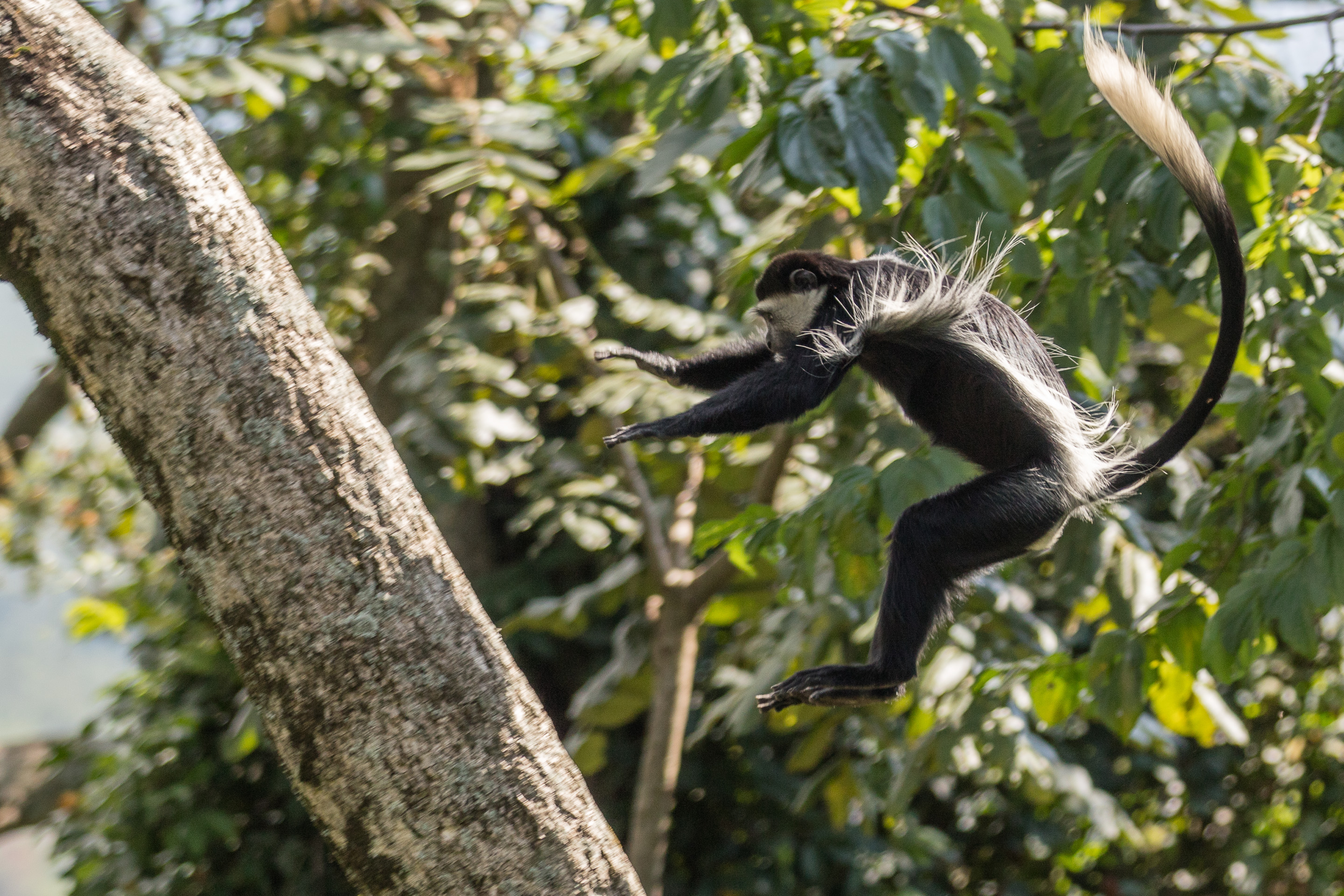
(Picture taken by Adam Kiefer)
Blue Monkey
Blue monkeys demonstrate flexible foraging strategies, adjusting their diet and movement patterns based on seasonal changes and group dynamics.
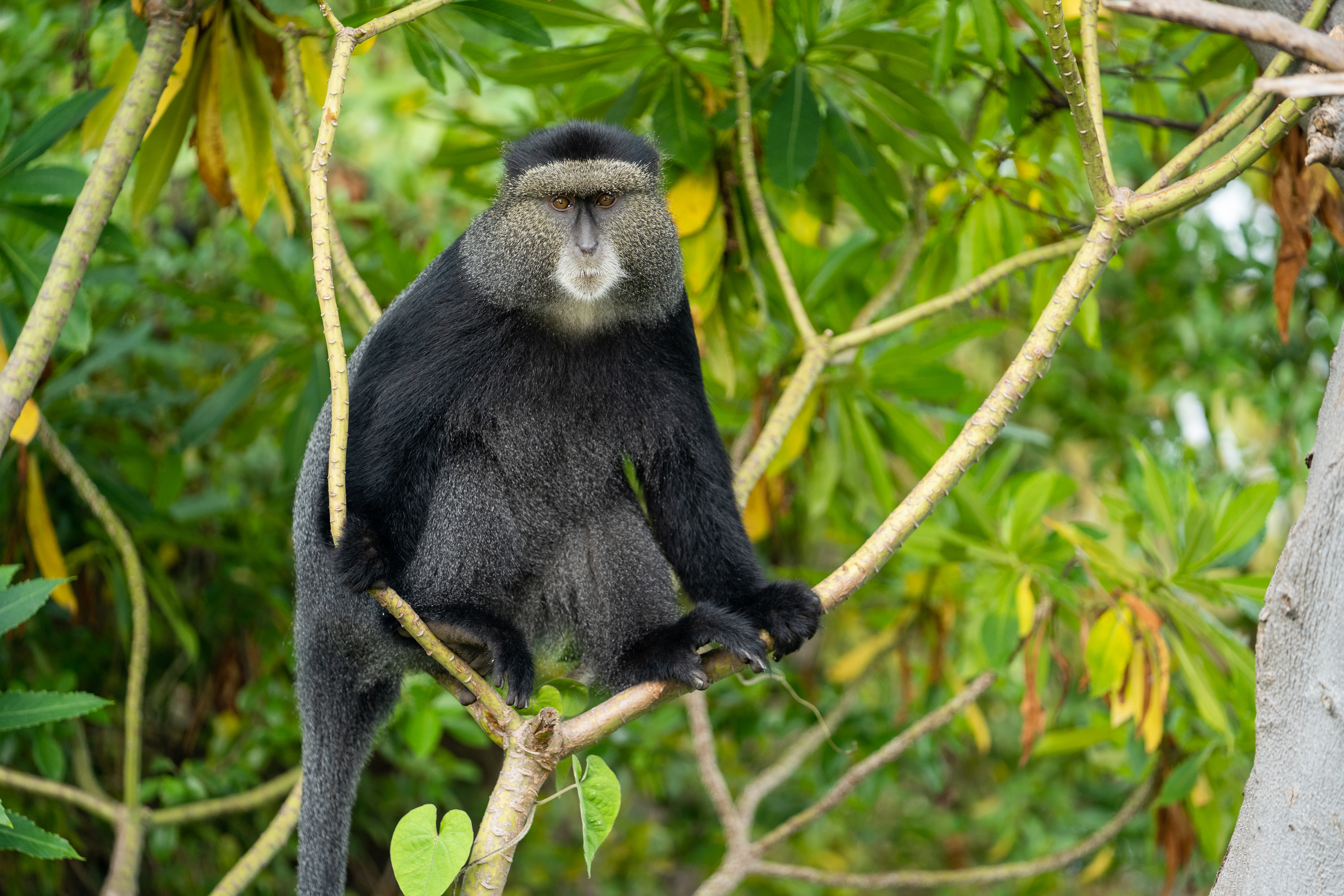
(Picture taken by Matthew Reichel)
Baboon
Baboons have highly developed social intelligence, forming shifting alliances and hierarchies that require constant negotiation and use of memory.
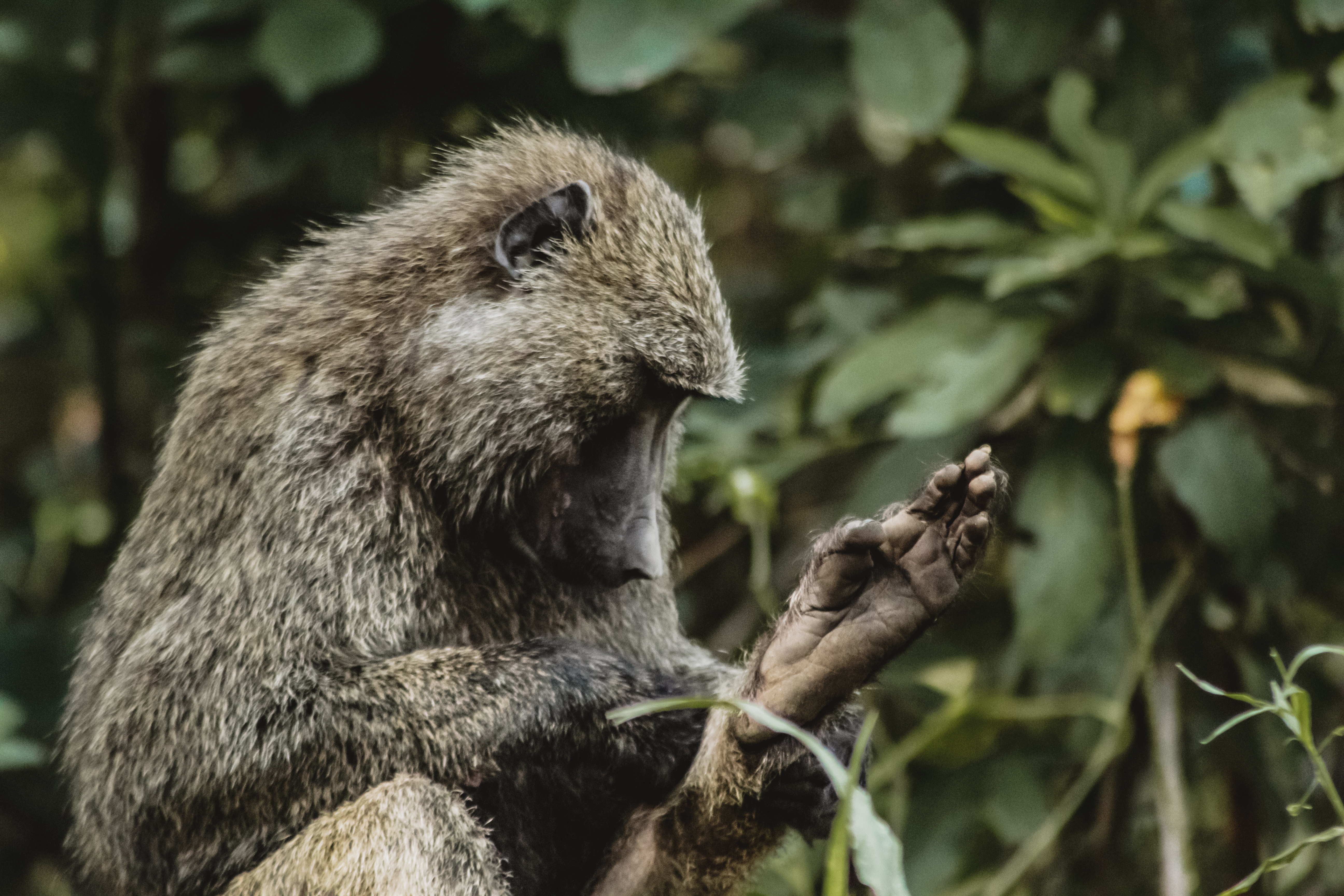
(Picture taken by Sarah Kangendo (Through The Lens Project))
L’Hoest’s Monkey
L’Hoest’s monkeys communicate with a wide range of facial expressions and vocalizations – an indicator of advanced social awareness.
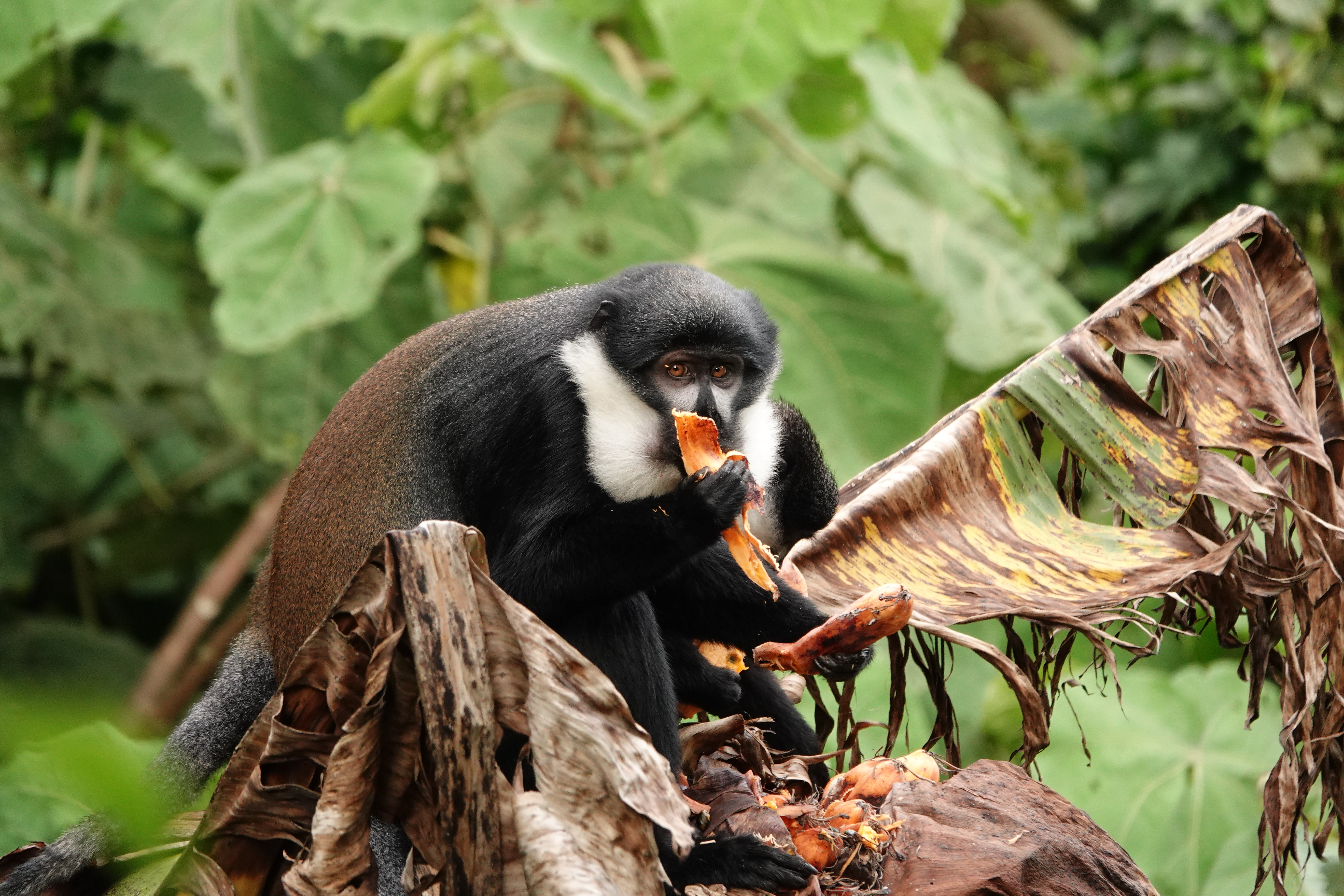
(Picture taken by Sarah Kangendo (Through The Lens Project))
Vervet Monkey
Vervet monkeys are famous for varied alarm calls, which convey specific threats from distinct predators, increasing the group’s survival chances.
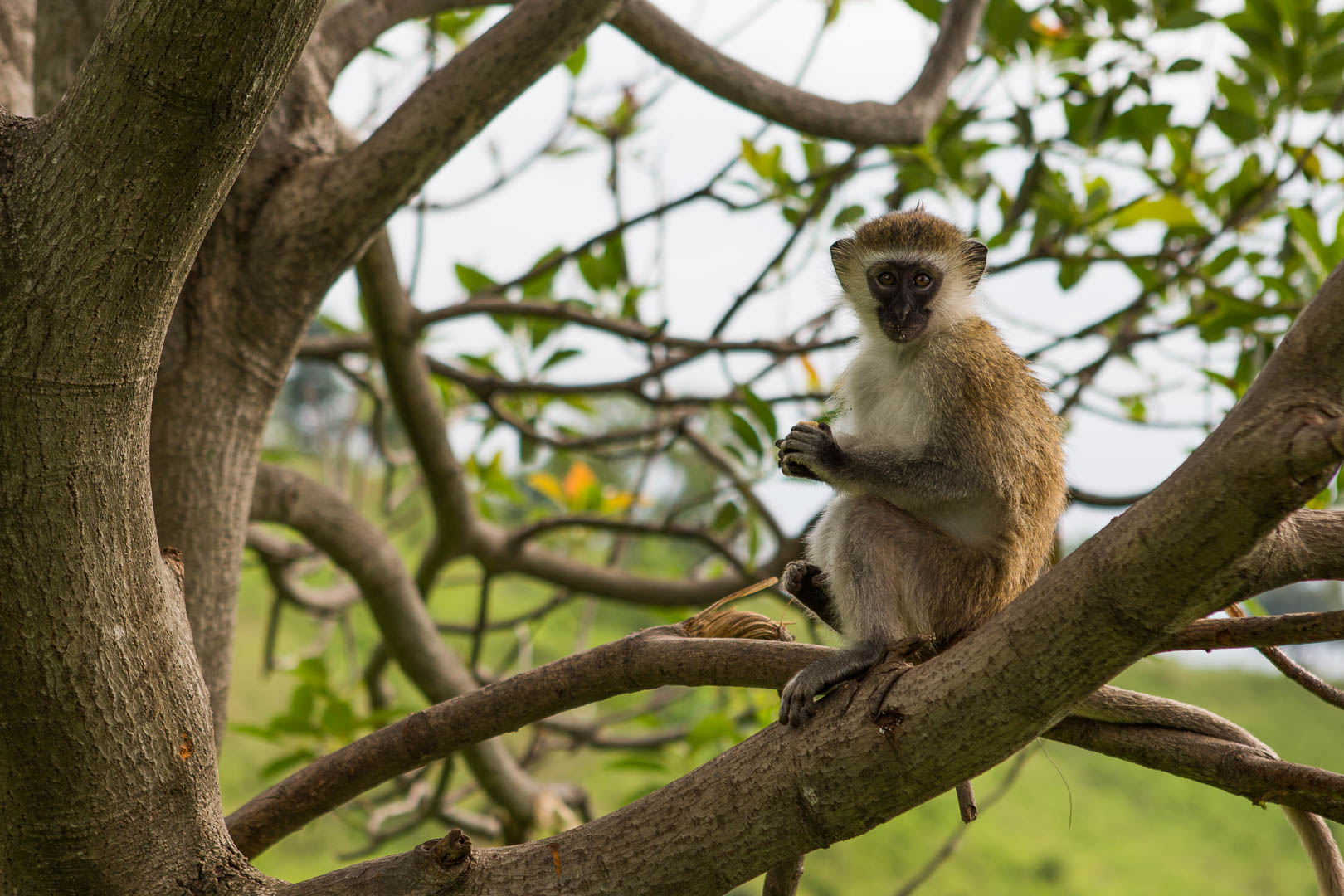
(Picture taken by Adam Kiefer)
Homo Sapiens
Commonly known as humans, these great apes are the most widespread of all Earth’s primates. They are known for their highly developed emotional intelligence, giving them the capacity to protect not only members of their own kind, but also those of other species.
Q. What is World Primate Day?
A. World Primate Day is a global observance dedicated to raising awareness of primates’ intelligence, communication, and their vital role in ecosystems. It highlights both their wonder and their vulnerability.
Q. Why are primates important to ecosystems?
A. Primates are seed-dispersing mammals, which means they help regenerate forests and maintain biodiversity. Their survival is directly linked to the health of ecosystems that humans also depend on.
Q. Why is Virunga National Park significant for primates?
A. Virunga National Park hosts the greatest diversity of primates in any African protected area. It provides sanctuary for species like gorillas, chimpanzees, and various monkeys, many of which are threatened or endangered.
Q. What makes mountain gorillas unique?
A. Mountain gorillas show advanced problem-solving and social intelligence. They often coordinate group strategies to protect their families from danger.
Q. What is special about eastern lowland gorillas?
A. Eastern lowland gorillas are known for their use of simple tools and their strong memory, which helps them navigate dense forests.
Q. How intelligent are eastern chimpanzees?
A. Eastern chimpanzees are among the most intelligent non-human animals. They make tools, plan in multiple stages, learn by imitation, and pass cultural knowledge from one generation to the next.
Q. What are colobus monkeys known for?
A. Colobus monkeys are easily recognized by their lack of thumbs. They display social intelligence through cooperative childcare and complex vocal communication.
Q. How do blue monkeys adapt to their environment?
A. Blue monkeys use flexible foraging strategies, adjusting their diet and movement according to seasonal changes and group dynamics.
Q. Why are baboons considered socially intelligent?
A. Baboons form shifting alliances and hierarchies that require memory, negotiation, and advanced social skills to navigate.
Q. How do L’Hoest’s monkeys communicate?
A. They use a wide range of facial expressions and vocalizations, showing advanced social awareness.
Q. What makes vervet monkeys special?
A. Vervet monkeys are famous for their alarm calls, which specify different predators, helping increase group survival.